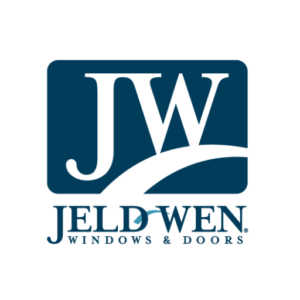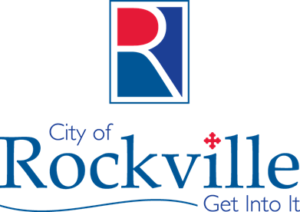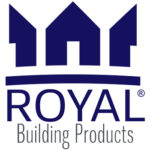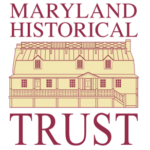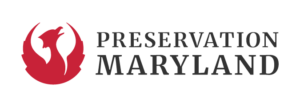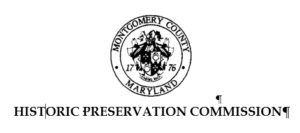
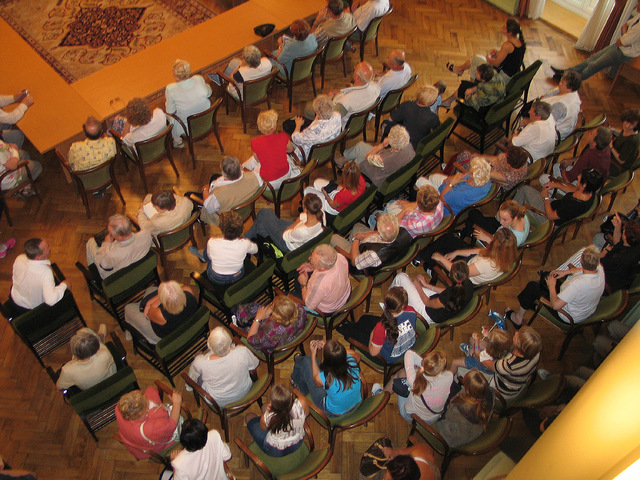
Replacement Materials Symposium
June 10, 2017 @ 8:00 am - 4:00 pm
| $65 – $75The full-day Replacement Materials Symposium for historic preservation commissioners, city and county staff, historic property owners, and preservationists will tackle the frequently controversial issue of substitute materials in historic places. Attendees will participate in interactive sessions led by leading practitioners in the field to consider:
- Why do preservationists have a tradition of retaining historic materials and how do replacement materials fit in?
- How are preservation and sustainability intertwined and how do we address the sustainable technologies invented to reduce the energy consumption of buildings?
- What are the current trends in historic preservation commissions accepting or denying substitute materials?
- How do commissions and staff best incorporate alternate materials into their design review process and guidelines?
- What do these replacement materials look and feel like up close?
- The symposium is eligible for CLG Educational and Training Funds reimbursement.
- Approved for 4 AIA Continuing Education Learning Units (LU) in Health, Safety and Welfare (HSW).
- Morning coffee/tea and lunch will be provided.
KEYNOTE: Dr. Theodore Prudon
 Dr. Theodore Prudon, FAIA, FAPT, FoIFI, BNADr, is an internationally renowned architect, preservation expert, architectural engineer, author, and educator. He has a deep building and architecture experience which spans hundreds of significant award winning projects over his 40 year career. He is one of the founding partners of the SC COLLECTIVE and founder of his practice of Prudon & Partners. He splits his time as Associate Professor at Columbia University’s Graduate School of Architecture, Planning, and Preservation, with his role as Professor at the Pratt Institute School of Architecture, Graduate Program for Historic Preservation.
Dr. Theodore Prudon, FAIA, FAPT, FoIFI, BNADr, is an internationally renowned architect, preservation expert, architectural engineer, author, and educator. He has a deep building and architecture experience which spans hundreds of significant award winning projects over his 40 year career. He is one of the founding partners of the SC COLLECTIVE and founder of his practice of Prudon & Partners. He splits his time as Associate Professor at Columbia University’s Graduate School of Architecture, Planning, and Preservation, with his role as Professor at the Pratt Institute School of Architecture, Graduate Program for Historic Preservation.
Dr. Prudon serves as the president of the US chapter of DOCOMOMO (DOcumentation and COnservation of buildings, sites and neighborhoods of the MOdern MOvement), which is dedicated to the preservation of modern heritage. He is the author of his seminal and award winning book, Preservation of Modern Architecture published by John Wiley & Sons (April 2008).
VENDOR HALL
Jeld-Wen (Sponsor)
Royal Building Products (Sponsor)
Andersen
Pac-Clad
Ecostar
Pella
Ply Gem
Azek
Boral
LP SmartSide
Englert, Inc.
HB&G
AGENDA
8:00-8:30 AM Registration Check-In
Breakfast provided
8:30-9:00 AM Welcome & Opening Remarks
Sheila Bashiri, MAHDC Board Member and Principal/Preservation Planner, City of Rockville
Fred Stachura, MAHDC President and Planning Supervisor, Community Planning Division, Prince George’s County
9:00-10:00 AM An Educated Consumer is our Best Customer: Authenticity, Integrity, and Modern Materials
Since the beginning of the modern historic preservation movement in the United States, evaluating the relationship between a property’s historic authenticity and physical integrity has been a constant concern among practitioners and the public. Throughout the period, certain types of changes have been readily accepted, while at the same time, it appears that the more that people know about the impact of material changes, the greater their appreciation for design guidelines. In the aftermath President Richard Nixon’s Executive Order 11593 the need for nationwide standards and guidance was illustrated by a controversy over the application of substitute materials at the Old San Francisco Mint.
Learning Objectives:
- Understand the concepts of authenticity and integrity as applied by historic preservation practitioners over the decades.
- Recognize the challenges presented by historic preservation’s mid-1960s paradigm shift from a focus on individual buildings and their educational and inspirational value to an emphasis on the historic districts and the “total environment.”
- Describe President Nixon’s role in the origins of the Secretary of the Interior’s historic rehabilitation standards
Dr. John H. Sprinkle, Jr., Bureau Historian, National Park Service
10:00-10:15 AM Break
Coffee and tea with snack
10:15-11:00 AM Keynote
Restoring and repairing historic buildings of any period brings with it having to deal with deteriorated or missing materials and building elements. This has become a particularly interesting issue in light of our concern for sustainability and recognition that historic and existing materials represent embodied energy. It is important to put this discussion about preservation and sustainability in the context of the historic use and the approach to material use.
Learning Objectives:
- Recognize the search and need for substitute and alternate materials for historic buildings is not new to our time
- Interpret replacement materials within the context of four criteria that have influenced the past and present use of alternate materials: compatibility, availability, sustainability, and extent and cost
- Understand there are no hard and fast rules, but there are three main cautions
Dr. Theodore Prudon, FAIA, FAPT, Prudon and Partners, DOCOMOMO, Columbia University, Pratt Institute School of Architecture
11:00 AM-12:00 PM Historic + Sustainable | An examination of the Threats and Opportunities of Sustainability of the Preservation of Historic Structures
Buildings consume more energy than any other sector in the United States. As more buildings become historic and new sustainable technologies are invented to reduce the energy consumption of building operations there will need to be more expansive conversation on what’s allowed on historic buildings. Preservation and sustainability are intertwined ideologies. This session will explore a holistic view of the two disciplines and provide tangible take aways for improving energy efficiency in historic buildings.
Learning Objectives:
- Understand the overlapping concepts of Historic Preservation and Sustainability.
- Understand how the Architecture2030 Challenge is changing the way architects look at existing building.
- Understand practical ways to improve the energy efficiency of a historic home.
- Examine how new sustainable technologies could be incorporated into historic structures.
Nakita Reed, AIA, LEED AP BD+C, Principal, Encore Sustainable Design
12:00-1:30 PM Vendor Hall and Lunch
Leading manufacturers and vendors of common alternative materials will display their products for attendees to touch and see. Confirmed participants include Jeld-Wen, Royal Building Products, Andersen, Pac-Clad, Ecostar, Royal Building Products, TW Perry, Pella, Ply Gem, Azek, LP SmartSide, Boral, and Englert, Inc.
Lunch provided.
1:30-2:30 PM Modern Materials: Case Studies & Open Forum
Commissioners, planners, and practitioners are frequently presented with the latest modern materials for use in historic districts and landmarked buildings, and it seems there is always something new to evaluate. In this session, a series of presenters will offer quick 5-7 minute accounts of projects that involved substitute materials, with special emphasis on lessons learned. Then the case study presenters and other speakers from the day, including our keynote Dr. Prudon, will open discussion to the floor and answer participants most pressing questions.
Learning objectives:
- Examine numerous real-life case studies related to replacement materials
- Identify best practices and lessons learned to be applied in future projects
- Engage with experts by asking follow-up questions
- Presenters to be announced shortly.
Dr. Elizabeth Milnarik-Taylor, AIA, Preservation Architect
Kim Finch, City of Annapolis Historic Preservation Commission
Kate Kenwright, Historic Preservation Specialist, L’Enfant Trust
Hank Handler, Oak Grove Restoration
Ashley Wilson, AIA, ASID, National Trust for Historic Preservation
2:30-3:45 PM Panel: Trends & Best Practices for Incorporating Alternate Materials into Design Review
This session will explore how local historic preservation commissions commonly treat replacement materials, while highlighting changes recently made to Baltimore City’s design guidelines. On the state level, Maryland Historical Trust staff will present on how replacement materials are reviewed for the state tax credit programs – which can conflict with commission guidelines. A Q&A with the audience will follow the panel presentations.
Learning objectives:
- Learn how commissions approach and review replacement materials in historic districts in sample jurisdictions nationwide, and how that perspective has changed over time.
- Explore how Baltimore City has addressed the competing priorities of preservation and public health with regard to lead paint, including the process that Baltimore’s preservation commission has created to eliminate lead-based paint hazards in local historic districts.
- Learn how the Secretary’s of the Interior’s Standards for Rehabilitation are applied to State and Federal tax credit projects.
- Explore how the State and Federal tax credit programs address replacement materials, including the process for determining what is appropriate for individual projects while complying with the Secretary’s Standards for Rehabilitation.
Facilator: Nell Ziehl, Chief of the Office of Planning, Education and Outreach, Maryland Historical Trust
Eric Holcomb, Executive Director, Commission for Historical and Architectural Preservation, and Historic and Architecture Preservation Division Chief, City of Baltimore
Megan Klem, Preservation Officer, Maryland Historical Trust
Phil Thomason, Principal, Thomason and Asociates, Preservation Planners
3:45-4:00 PM Closing remarks
Fred Stachura and Sheila Bashiri
PRINCIPAL SPONSORS

